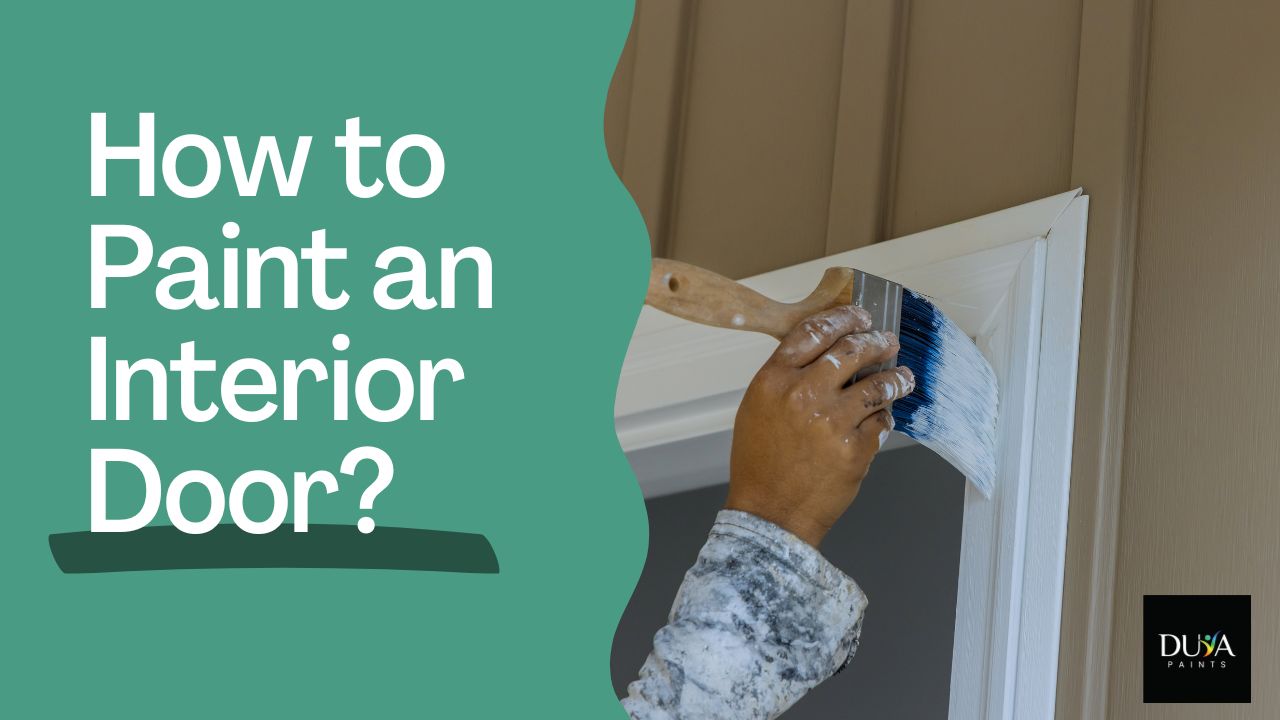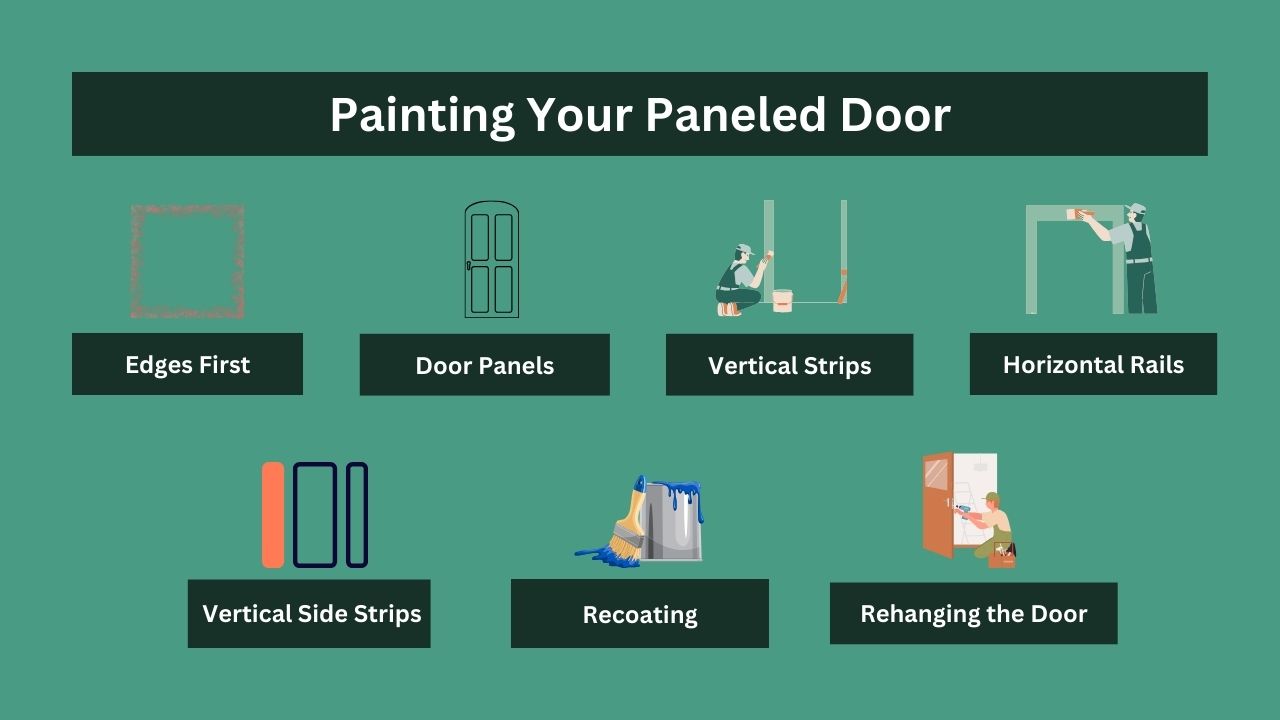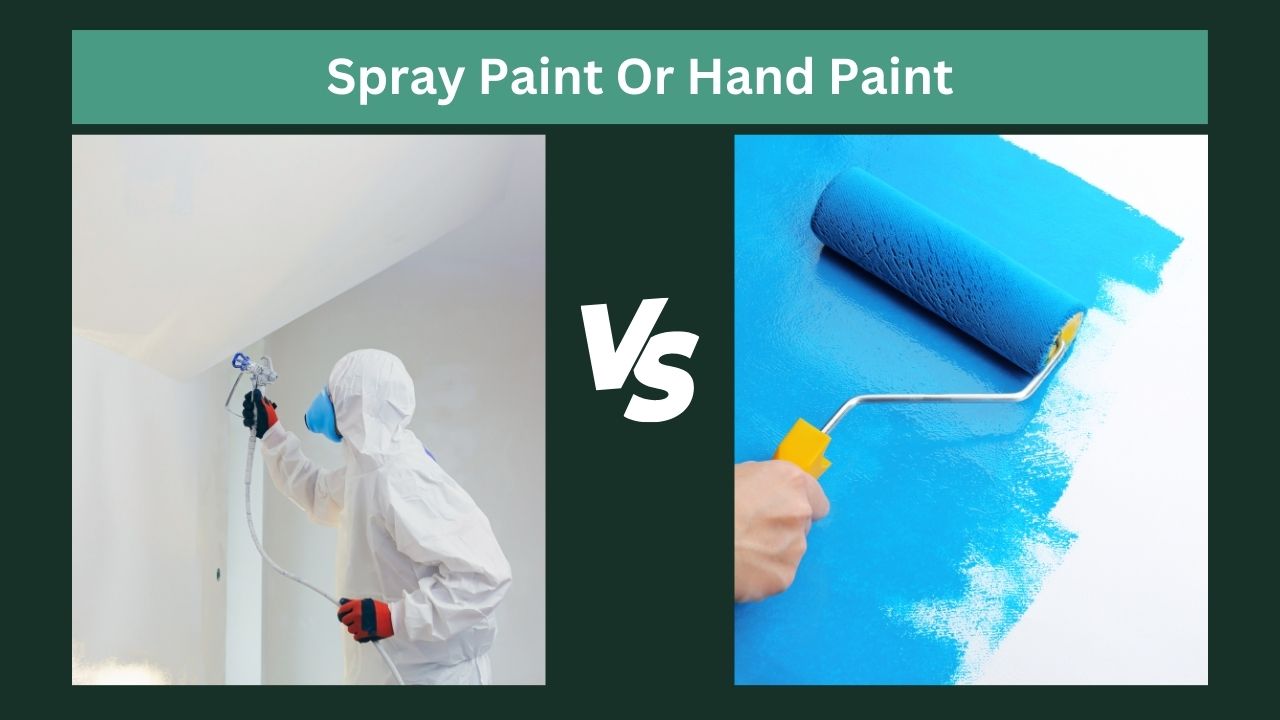How to Paint an Interior Door Like a Professional?

Painting an interior door can make a big difference in any room. Whether you want to match a new color scheme, cover up damage, or change the look, painting a door is an easy DIY project with great results. With the right tools and steps, you can make your door look new again.
To paint an interior door like a professional, thoroughly clean and sand the surface. Apply high-quality paint evenly with a brush or roller, following the wood grain for a smooth finish.
Before we dive into the topic you might wanna know What Color Should I Paint My House Interior?
This article delves into the step-by-step process of painting an interior door, covering everything from preparation to finishing touches. You’ll learn essential techniques to achieve a professional-quality finish and easily transform your space’s appearance.

Choosing the Right Paint Color
The first step in painting your interior doors is selecting the right paint color. I remember agonizing over paint samples, trying to find the perfect shade. Here are some tried-and-true options to consider:

Whites
- Dove White
- Simply White
Light to Mid-Tone Grays
- Repose Gray
- Charcoal Slate
Dark Grays
- Kendall Charcoal
- Wrought Iron
Sticking with white or gray can create a timeless look, but don’t be afraid to explore darker shades for a bold statement. When I painted the door to my home office a deep charcoal, it added a sophisticated touch that I still love today.
You might be interested to know about How to Paint Interior Window Frames?
Gathering Your Painting Tools
Before you start, make sure you have all the necessary tools. I’ve made the mistake of starting a project only to realize I was missing something crucial. Here’s a comprehensive list of what you’ll need:
- Wood filler (for old doors with nicks)
- Putty knife
- Sandpaper (150 grit and 220 grit)
- Tack cloth
- Drop cloth (canvas or plastic to protect your floor)
- Painter’s tape
- Utility knife
- Paintbrush (2″ angled brush)
- 4″ woven rollers with ¼” nap or 4″ foam rollers
- Roller handle for 4″ rollers
- Mini roller tray
Having these tools on hand will streamline the process and ensure you’re not scrambling mid-project.

Preparing Your Door for Painting
Preparation is key to a smooth, professional finish. I learned early on that skipping these steps leads to subpar results. Here’s how to prep your door properly:
Remove Door Hardware
- Remove the door from its hinges and lay it flat on sawhorses. This makes painting easier and prevents drips.
- If you prefer to leave the door in place, remove the knobs and cover the hinges with painter’s tape. Use a utility knife to trace the outside of the hinge, ensuring a clean line.
Fill and Sand
- Fill any gouges or imperfections with wood filler and sand smooth with 150-grit sandpaper. In my experience, taking the time to do this step right makes a huge difference.
- Lightly sand the entire door with 220-grit sandpaper to create a smooth surface for painting.
- Wipe away most of the sanding dust with a cloth, then use a tack cloth to remove any remaining dust.
Prime Your Door
- If the door is new and unprimed, or if you use latex paint over oil-based paint, you must prime the door.
- Test for oil-based paint by rubbing a rag soaked in rubbing alcohol on the door. If paint comes off on the rag, it is latex. If not, it is oil-based.
- Use a primer appropriate for your door’s current paint type and follow the same order for priming as you will for painting.
Here’s a Whirlpool forum archive discussing various topics. It’s a resourceful place for finding helpful community insights and advice.
Painting Your Paneled Door
When it comes to painting paneled doors, order and technique matter. The first few doors I painted ended up with streaks and uneven coverage until I figured out the right process. Here’s how to do it:

Edges First
Start by painting the edges of the door with a brush or roller. This helps prevent drips and ensures even coverage.
Also read How To Paint Interior Brickwork?
Door Panels
- Use a 1 ½” brush to paint the recessed molding areas. I found that a small brush gives you control and precision.
- Follow with a 4″ roller for the flat surfaces in the middle of the panels.
- Feather the edges of the molding to avoid hard lines. This step ensures a seamless look.
Vertical Strips
Paint the three vertical strips down the center of the door with the 4″ roller.
Horizontal Rails
Paint the four horizontal rails with the 4″ roller. This method helps maintain an even finish.
Vertical Side Strips
Finish by painting the two vertical strips on the sides with the 4″ roller.
Sanding and Recoating
- After the first coat of paint has dried, lightly sand the door with 320-grit sandpaper to remove any imperfections. This step, although tedious, is crucial for a smooth finish. Use a tack cloth to remove the sanding residue and apply a second coat of paint.
- If you’re using sawhorses, allow the paint to dry for at least 24 hours before flipping the door to paint the other side. Cover the sawhorses with a smooth cloth to prevent the newly painted door from sticking.
- I remember being impatient and flipping too soon once, which left marks on the paint—lesson learned.
Must read How Long Does Interior Paint Take to Dry?

Rehanging the Door and Final Touches
Once both sides of the door are dry, rehang the door and reinstall the hardware. Ensure the paint is completely dry to avoid smudges and fingerprints. This final step brings everything together; seeing the finished product is always rewarding.
How To Spray Paint Interior Doors
Proper preparation is crucial for achieving a professional finish with spray paint. Skipping these steps can lead to subpar results, so take the time to prepare thoroughly.

Gather Your Materials
Before starting, ensure you have all the necessary materials:
- Spray paint (specifically designed for doors and trim)
- Primer (if needed)
- Drop cloths or plastic sheeting
- Painter’s tape
- Sandpaper (150 grit and 220 grit)
- Tack cloth
- Respirator mask (to protect from fumes)
- Safety goggles
- Spray paint gun or can (if using a paint gun, ensure it’s compatible with your paint)
Clean and Sand the Door
Clean the door thoroughly to remove dirt, grease, or old paint. Sand the door with 150-grit sandpaper to create a smooth surface, and then use 220-grit sandpaper for a finer finish. Wipe down the door with a tack cloth to remove all sanding dust.
Prime the Door
If the door has never been painted or you’re switching from an oil-based to a latex paint, apply a primer. I’ve found that priming ensures better paint adhesion and a more durable finish. Follow the same steps for priming for painting, starting with the edges and moving to the flat surfaces.
Explore DIY Chatroom’s discussion on spray painting interior doors. It’s a valuable resource for tips and techniques. Discover how to achieve professional results!
Also Read Can I Use Interior Paint Outside?
Spray Painting Technique
Spray painting requires a steady hand and technique to avoid drips and even coverage. Here’s how to do it:
Setting Up
Set up your workspace in a well-ventilated area. Lay down drop cloths or plastic sheeting to protect the floor and surrounding surfaces. I always wear a respirator mask and safety goggles to protect myself from fumes and overspray.
Applying the Paint
Start with the Edges
- Hold the spray gun about 6-12 inches from the surface and move steadily.
- Start spraying before hitting the surface and continue past the edge to avoid start-and-stop marks.
Spray the Panels
- Begin with the recessed areas of the door panels. This ensures the paint covers all angles and crevices.
- Move on to the flat surfaces, maintaining a consistent distance and speed.
Vertical and Horizontal Strips
- Spray the vertical strips down the center of the door next.
- Follow with the horizontal strips, ensuring even coverage.
Final Touches
- Finish with the vertical side strips.
- Apply light, even coats, to avoid drips. Multiple thin coats are better than one thick coat.
You might be interested to know about How Long Is Interior Paint Good For Once Opened?
Drying and Recoating
Allow the first coat to dry completely before applying additional coats. Lightly sand the door with 320-grit sandpaper between coats to achieve a smooth finish. This step removes imperfections and ensures the next coat adheres well.
Which Is Recommended, Spray Paint Or Hand Paint And Why?
When deciding whether to spray paint or hand paint interior doors, it’s essential to consider the pros and cons of each method. Having tried both, I can say that each has its own merits, but the choice ultimately depends on your specific needs and preferences.
1. Spray Painting
Advantages
- Smooth Finish: Spray painting provides a smooth finish without brush marks. I’ve found this especially useful for large, flat surfaces like doors.
- Speed: Spray painting can be faster than hand painting, covering large areas quickly.
- Efficiency: Achieving a uniform coat with spray paint is easier, reducing the need for multiple layers.
Disadvantages
- Preparation Time: Spray painting requires extensive preparation to protect surrounding areas from overspray.
- Equipment Cost: You need a sprayer, which can be an investment if you don’t already have one.

2. Hand Painting
Advantages
- Control: Hand painting offers more control, making it easier to paint intricate details.
- Less Mess: There’s less overspray, meaning less preparation and cleanup.
- Accessibility: All you need is a brush and roller, making it more accessible for small projects.
Disadvantages
- Brush Marks: Avoiding brush marks, especially on large, flat surfaces, can be challenging.
- Time-Consuming: Hand painting can be more time-consuming, requiring multiple coats for even coverage.
Conclusion
Painting an interior door like a professional requires thorough preparation, including cleaning, sanding, and priming. Applying paint evenly with a brush or roller in systematic panels ensures a smooth, polished finish that enhances the overall aesthetic of your home. By following these steps diligently, you can achieve results that rival those of a professional painter, transforming your space with a fresh and refined look.

FAQs
What type of paint is best for interior doors?
High-quality latex or oil-based paint works best for interior doors. Latex is easy to use and clean, while oil-based provides durability and fewer brush marks. Semi-gloss or high-gloss finishes are ideal for their cleanability and resistance to scuffs.
Do I need to sand my doors before painting?
Yes, sanding smooths imperfections and helps the paint adhere better. Use 150-grit sandpaper for rough spots and 220-grit for a fine finish. Clean the dust with a tack cloth afterward.
Can I paint my door without removing it from its hinges?
Yes, but removing the door makes it easier to achieve a smooth finish. Protect the area with painter’s tape and drop cloths if left on. Cover hinges and knobs to avoid paint splatters.
How many coats of paint do I need for my interior door?
At least two coats are usually needed for a solid, even finish. Allow the first coat to dry completely before applying the second. Lightly sand between coats for better adhesion and a smoother finish.
How long should I wait between coats of paint?
Wait 2-4 hours between coats for latex paint and 24 hours for oil-based paint. Ensure the previous coat is fully dry before applying the next. Allow the final coat to cure for 24 hours before re-hanging the door.
